We need your consent to use the individual data so that you can see information about your interests, among other things. Click "OK" to give your consent.
ASTM D7121-05(2012)
Standard Test Method for Rubber Property—Resilience Using Schob Type Rebound Pendulum
STANDARD published on 1.5.2012
The information about the standard:
Designation standards: ASTM D7121-05(2012)
Note: WITHDRAWN
Publication date standards: 1.5.2012
SKU: NS-37602
The number of pages: 4
Approximate weight : 12 g (0.03 lbs)
Country: American technical standard
Category: Technical standards ASTM
The category - similar standards:
Annotation of standard text ASTM D7121-05(2012) :
Keywords:
impact, oscillatory device, pendulum rebound, rebound, resilience, rubber, ICS Number Code 83.060 (Rubber)
Additional information
| Significance and Use | ||||||||||||||
|
The Schob Type rebound pendulum is designed to measure the percentage resilience of a rubber compound as an indication of hysteretic energy loss that can also be defined by the relationship between storage modulus and loss modulus. The percent rebound measured is inversely proportional to the hysteretic loss. Percentage resilience or rebound resilience are commonly used in quality control testing of polymers and compounding chemicals. Rebound resilience is determined by a freely falling pendulum hammer that is dropped from a given height that impacts a test specimen and imparts to it a certain amount of energy. A portion of that energy is returned by the specimen to the pendulum and may be measured by the extent to which the pendulum rebounds, whereby the restoring force is determined by gravity. Since the energy of the pendulum is proportional to the vertical component of the displacement of the pendulum, it may be expressed as 1 – cos (of the angle of displacement) and percentage rebound resilience. RB, commonly called percentage rebound, is determined from the equation: The rebound resilience may be calculated as:
The rebound resilience may also be determined by the measurement of the angle of rebound α. From the rebound angle α, the rebound resilience in percent is obtained according to the following formula: |
||||||||||||||
| 1. Scope | ||||||||||||||
|
1.1 This test method covers a means of determining the resilience of rubber, within a range of impact strain and strain rate, by means of the impacting and measuring apparatus conforming to the requirements described in this test method. 1.2 This test method is applicable to thermoset rubbers and thermoplastic elastomers, the hardness of which, at the specified test temperatures, lies between 30 and 85 IRHD (see Test Method D1415) or A/30 and A/85 (see Test Method D2240). It may also be applicable to some polyester, polyether foam, and plastic foam materials. 1.3 All materials, instruments, or equipment used for the determination of mass, force, or dimension shall have traceability to the National Institute for Standards and Technology, or other internationally recognized organization parallel in nature. 1.4 The values stated in SI units are to be regarded as standard. The values given in parentheses are for information only. 1.5 This standard does not purport to address all of the safety concerns, if any, associated with its use. It is the responsibility of the user of this standard to establish appropriate safety and health practices and determine the applicability of regulatory limitations prior to use. |
||||||||||||||
| 2. Referenced Documents | ||||||||||||||
|
||||||||||||||
Similar standards:
Historical
1.6.2010
Historical
1.5.2009
Historical
1.7.2009
Historical
1.5.2010
Historical
1.5.2010
Historical
1.1.2012
We recommend:
Technical standards updating
Do you want to make sure you use only the valid technical standards?
We can offer you a solution which will provide you a monthly overview concerning the updating of standards which you use.
Would you like to know more? Look at this page.



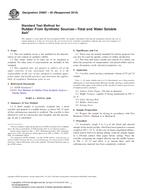 ASTM D5667-95(2010)..
ASTM D5667-95(2010)..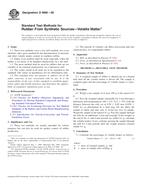 ASTM D5668-09
ASTM D5668-09 ASTM D5670-95(2009)..
ASTM D5670-95(2009)..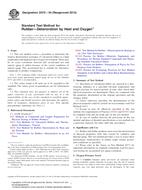 ASTM D572-04(2010)..
ASTM D572-04(2010)..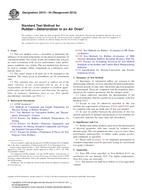 ASTM D573-04(2010)..
ASTM D573-04(2010)..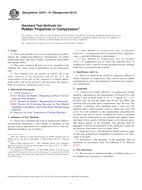 ASTM D575-91(2012)..
ASTM D575-91(2012)..
 Cookies
Cookies
